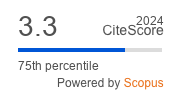Article | Open Access
The Integration Into Diversity Paradox: Positive Attitudes Towards Diversity While Self‐Segregating in Practice
| Views: | 1311 | | | Downloads: | 977 |
Abstract: More and more people without a migration background are living in neighborhoods in large Western European cities where they form a numerical minority. This raises a new research question: Are they integrated in such diverse city contexts or do they live a segregated life? We developed the integration into diversity (ID) matrix to distinguish nine “integration into diversity positions” based on people’s positive or negative attitudes towards diversity together with the ethnic composition of their friendship groups. Using the data from the recent Becoming a Minority (BaM) project we found ID positions that are each other’s opposites, a number of positions that are in‐between, and two seemingly paradoxical positions. In this article, we will concentrate on one of these paradoxical positions: people who display positive attitudes towards diversity but do not have a mixed friendship group. This is one of the largest groups in our sample. Apparently, mixing does not happen by itself. Through quantitative and qualitative data, we explore how this ID paradox can be resolved. We found that for interethnic contact to take place among this group, there needs to be a structured activity in place. This can be a mixed social activity, a mixed sports team, the mixed school of their children, or a mixed working place. What these all have in common is that the mixing is organized and the expectations and rules of engagement are clear.
Keywords: belonging; European cities; integration into diversity; majority–minority; segregation
Published:
Issue:
Vol 12 (2024): Belonging and Boundary Work in Majority–Minority Cities: Practices of (In)Exclusion
© Maurice Crul, Lisa-Marie Kraus, Frans Lelie. This is an open access article distributed under the terms of the Creative Commons Attribution 4.0 license (http://creativecommons.org/licenses/by/4.0), which permits any use, distribution, and reproduction of the work without further permission provided the original author(s) and source are credited.


